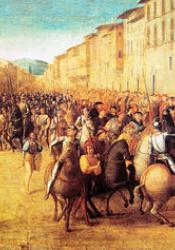Milan
Milan is the capital city of the Lombardy region in northern Italy. In the fifteenth century, under the leadership of the House of Sforza, Milan became one of the leading cities of the Italian Renaissance. The city is particularly noted for its architecture, art, and fashion; it is home to the world's largest Gothic cathedral. Lombardy had been under Austrian rule since the early eighteenth century, but 1848 saw the “Five Days” rebellion against Austria in Milan. Following the defeat of Austria by France and Sardinia at the Battle of Solferino in 1859, Lombardy became part of the Kingdom of Sardinia.
Coordinates
Latitude: 45.466586941986
Longitude: 9.190206534695
Longitude: 9.190206534695



